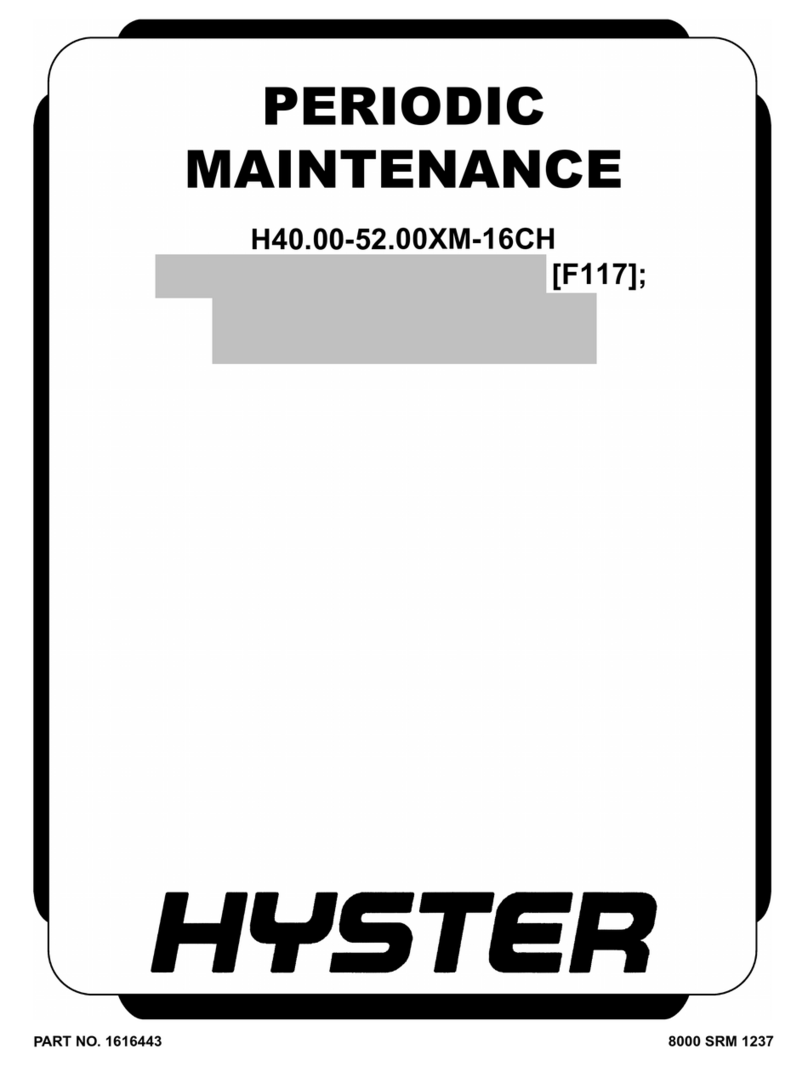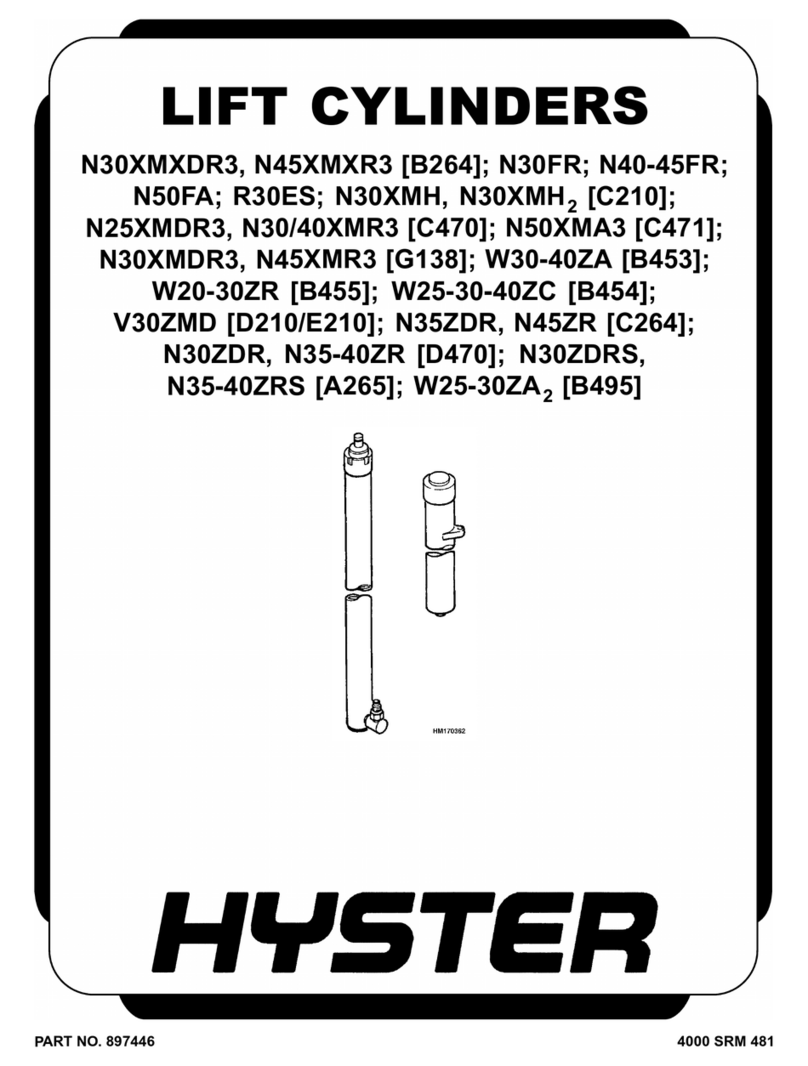
©2016 HYSTER COMPANY
TABLE OF CONTENTS
General .....................................................................................................................................................................1
Description of Operation .........................................................................................................................................2
Special Precautions .................................................................................................................................................6
Discharging the Capacitors ................................................................................................................................6
Electrical System Checks ........................................................................................................................................7
Repairs .....................................................................................................................................................................9
Calibration Mode .................................................................................................................................................9
Controller, Replace ..............................................................................................................................................9
Remove ............................................................................................................................................................9
Install ............................................................................................................................................................10
Control Module ..................................................................................................................................................10
Check .............................................................................................................................................................10
Remove ..........................................................................................................................................................12
Install ............................................................................................................................................................13
Contactor ...........................................................................................................................................................13
Check .............................................................................................................................................................13
Remove ..........................................................................................................................................................13
Install ............................................................................................................................................................14
Key Switch .............................................................................................................................................................14
Remove .............................................................................................................................................................. 14
Install .................................................................................................................................................................15
Parking Brake Switch ...........................................................................................................................................15
Remove .............................................................................................................................................................. 15
Install .................................................................................................................................................................16
Fuses ......................................................................................................................................................................16
Horn .......................................................................................................................................................................17
Replace ...............................................................................................................................................................17
High Speed Switch Assembly ...............................................................................................................................17
Remove .............................................................................................................................................................. 17
Install .................................................................................................................................................................18
Control Handle ......................................................................................................................................................19
Disassemble .......................................................................................................................................................19
Hand-brake ...................................................................................................................................................19
Upper Cover ..................................................................................................................................................20
Handle Shaft .................................................................................................................................................20
Lower Cover ..................................................................................................................................................20
Directional/Throttle Switch ..........................................................................................................................21
Neutral Switches ......................................................................................................................................21
Throttle Sensor .........................................................................................................................................21
Assemble ............................................................................................................................................................25
Directional/Throttle Switch ..........................................................................................................................25
Neutral Switches ......................................................................................................................................25
Throttle Sensor .........................................................................................................................................26
Lower Cover ..................................................................................................................................................26
Handle Shaft .................................................................................................................................................26
Upper Cover ..................................................................................................................................................27
Hand-brake ...................................................................................................................................................27
Lift Pump Motor (C60ZHD and C80ZHD Only)...................................................................................................28
Remove .............................................................................................................................................................. 28
Install .................................................................................................................................................................28
Table of Contents
i
































